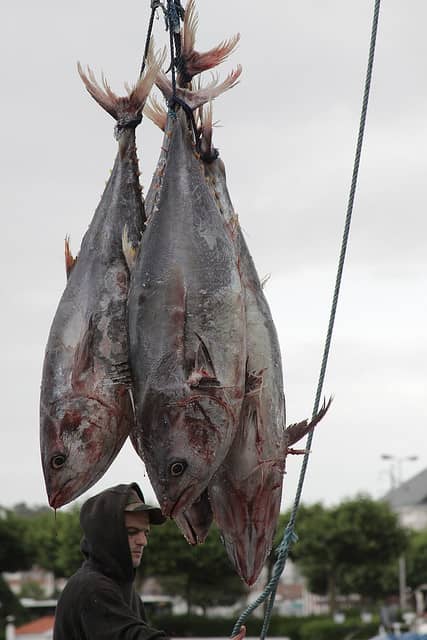Bluefin Tuna Carrying Radiation from Japan to California
OutdoorHub Reporters 05.31.12

Earlier this week, scientists discovered elevated levels of radiation in bluefin tuna caught off the coast of California. Daniel J. Madigan, a marine ecologist at Stanford’s Hopkins Marine Station in Pacific Grove, was researching the migratory patterns of bluefin tuna as part of a broader study of Pacific fish migration when he made the discovery.
Madigan was testing samples of muscle tissue from 15 tuna caught by a San Diego fisherman in August 2011. He found radioactivity in one sample and decided to send all 15 samples to Nicholas Fisher, marine scientist and specialist in radiation at Stony Brook University in Long Island.
The fish showed higher-than-average levels of the radioactive isotopes cesium-137 and cesium-134. Although radiation levels in the tuna were about 3% above the average of other tuna caught in California, they are still well below levels at which the fish would be considered unsafe for human consumption.
Scientists say the higher radiation level was undoubtedly a result of the Fukushima nuclear disaster, caused by the devastating tsunami which hit the Japanese mainland in March 2011 in the wake of a massive offshore earthquake. The isotopes discovered in the fish do not naturally occur in the wild, but are the products of nuclear fission. Before the Fukushima explosion, cesium-134 was undetected in Japanese waters, while cesium-137 is present in most global waters due to nuclear weapons testing. Muscle samples taken from bluefin tuna one year prior to this sampling showed no trace of cesium-134 and lower levels of cesium-137, according to findings published in the Proceedings of the National Academy of Sciences.
Nearly 60,000 square miles of ocean off the coast of Japan were contaminated with increased concentrations of radioactivity as the nuclear plant workers pumped seawater over reactor cores in an attempt to prevent a complete meltdown.
Madigan said he will continue to collect samples from another group of bluefin tuna who will have lived in Fukushima’s contaminated ocean for a full year longer than this set of fish.
“We don’t think there will be any public health concern from the results of the new tests,” Fisher said to the San Francisco Chronicle, “but if we do see any higher concentrations of cesium, we will certainly alert public health agencies again.”

